Lateral approach to the pediatric femoral shaft
1. Introduction
Open procedures use an incision on the lateral aspect of the thigh.
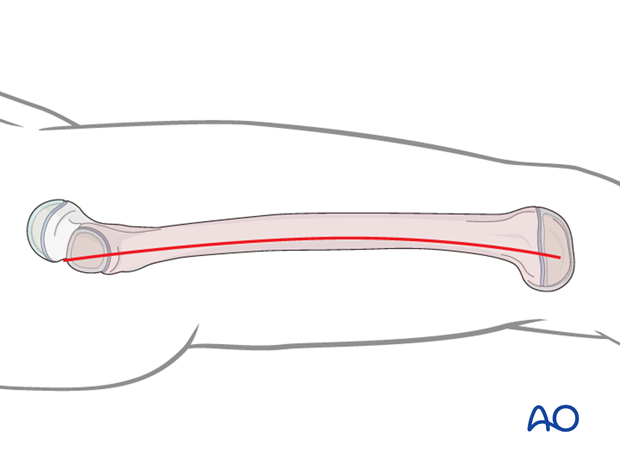
2. Principles
The major vessels and nerves are located medially/posteromedially to the femoral shaft and are not exposed using this approach.
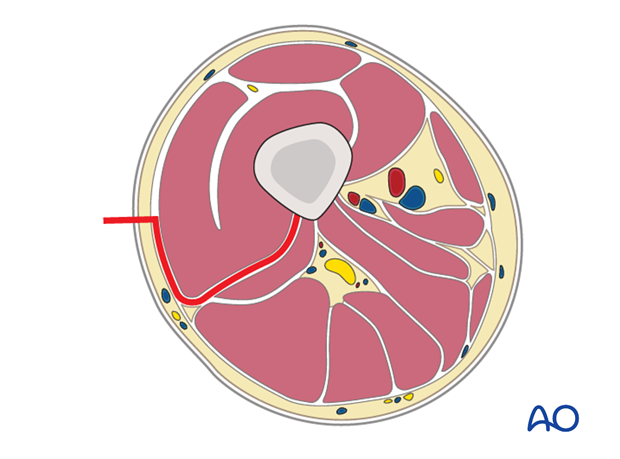
3. Skin incision
Perform an incision along a line between the lateral femoral epicondyle and the greater trochanter, along the length of the femur determined by the specific fracture pattern.

4. Opening the fascia lata
Incise the fascia lata with a scalpel and split it with scissors parallel to the skin incision, along its fibers.
Expose the fascia over the vastus lateralis.
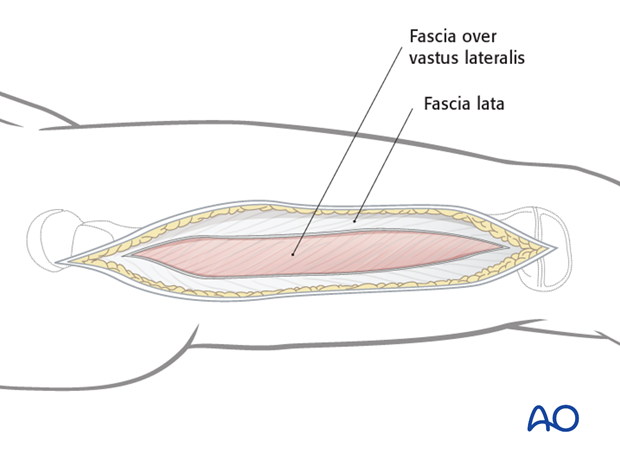
5. Principles of a safe approach
As the fibers of origin of the vastus lateralis are elevated from the intermuscular septum, identify the perforating vessels and protect or ligate them.
If divided close to the septum, the proximal ends can retract into the posterior compartment of the thigh, causing troublesome occult bleeding.

6. Separation of vastus lateralis from fascia lata
Separate the vastus lateralis from the fascia lata using blunt dissection.
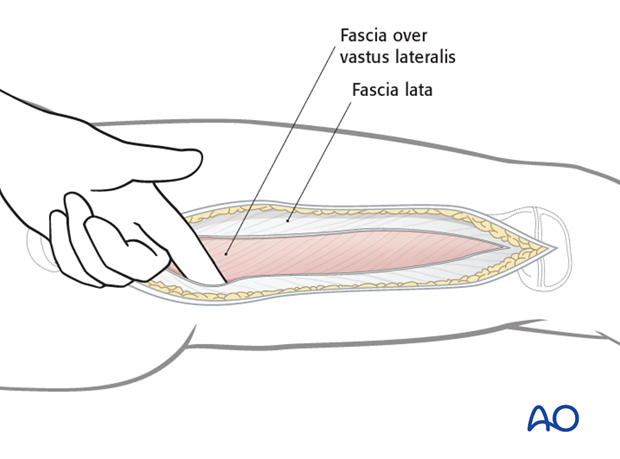
7. Incision of the fascia vastus lateralis
Retract the vastus lateralis anteromedially.
Incise the fascia investing the vastus lateralis 1 cm anterior to the intermuscular septum.
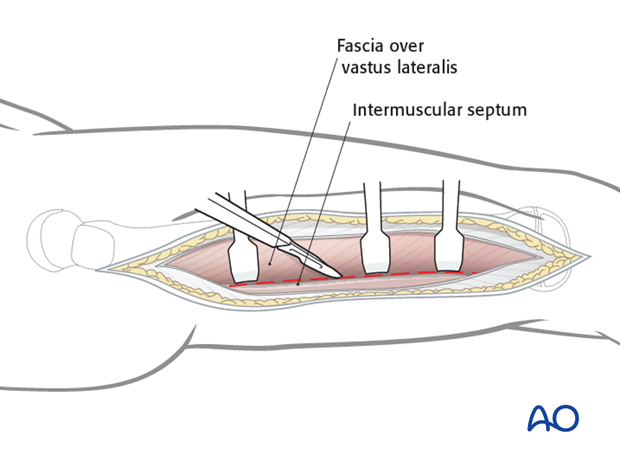
8. Mobilization of vastus lateralis from intermuscular septum
Detach the muscle from the lateral intermuscular septum and the linea aspera with a periosteal elevator.
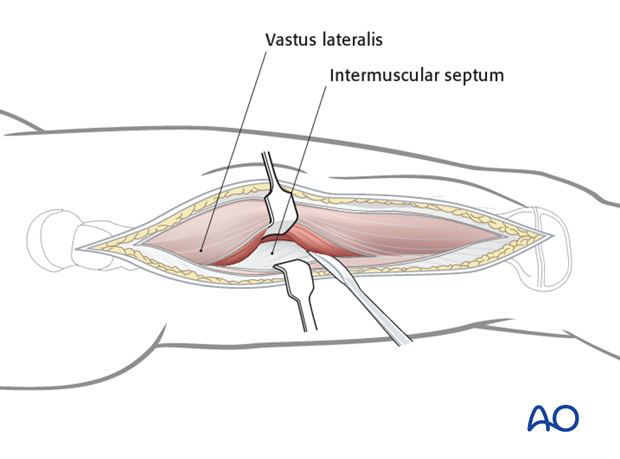
9. Control of perforating vessels
Identify the perforating vessel bundles.
These vessels perforate the lateral intermuscular septum from the posterior side and run anteriorly, remaining closely applied to the femoral shaft.
In children these vessels can be cauterized with the diathermy.
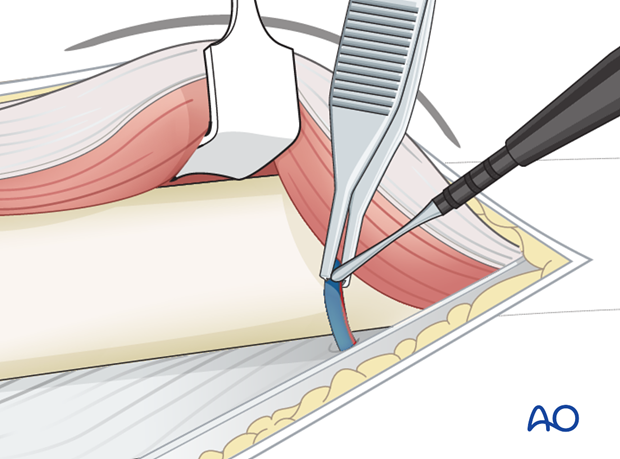
10. Exposure of the bone
Using the elevator, continue extraperiosteal detachment of the vastus lateralis to expose the femoral shaft.
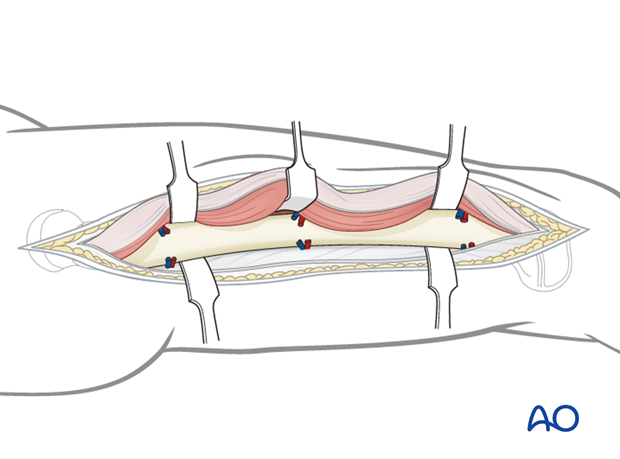
11. Exposure of the proximal femoral shaft
If exposure of the proximal femoral shaft is necessary, identify the origin of the vastus lateralis.
Retract the muscle anteriorly and perform an L-shaped incision down to the bone. The transverse part of the incision lies in the interval between gluteus medius and vastus lateralis.
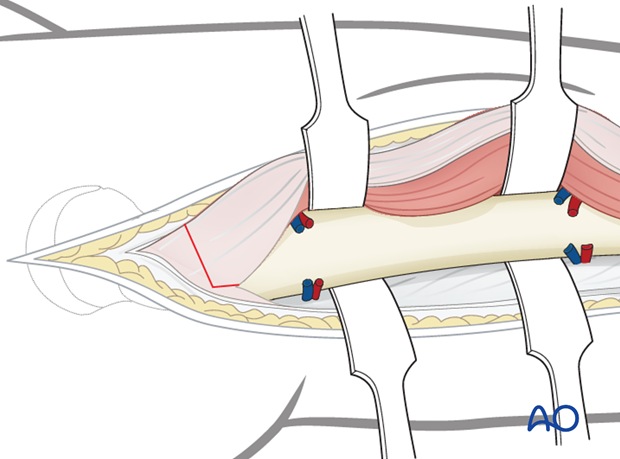
Dissect the muscle from its origin using a periosteal elevator.
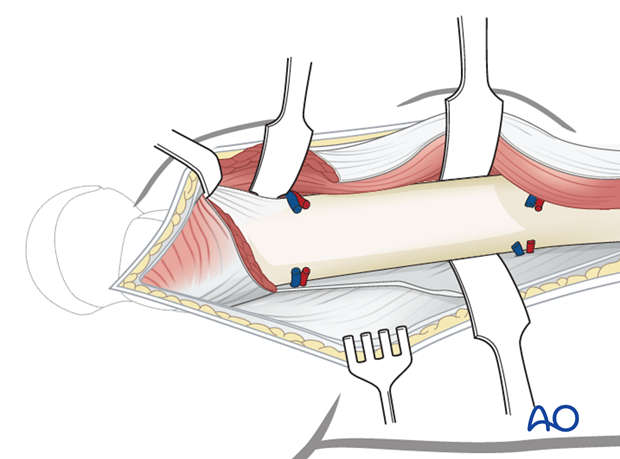
12. Closure
Return the vastus lateralis to its original position over the lateral femur. Repair the origin and close the tensor fascia lata.
The subcutaneous tissue and skin are closed according to surgeon’s preference.












